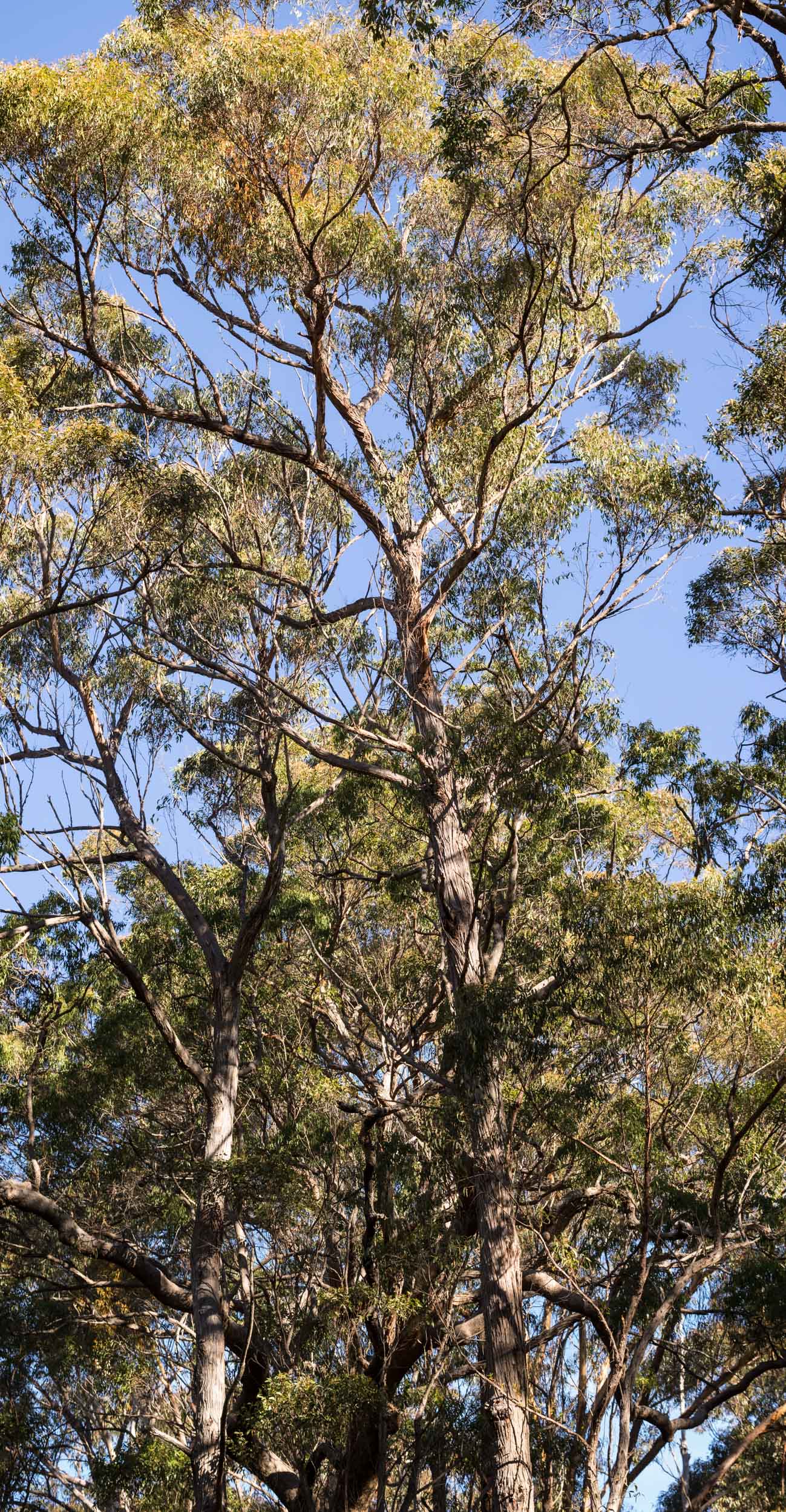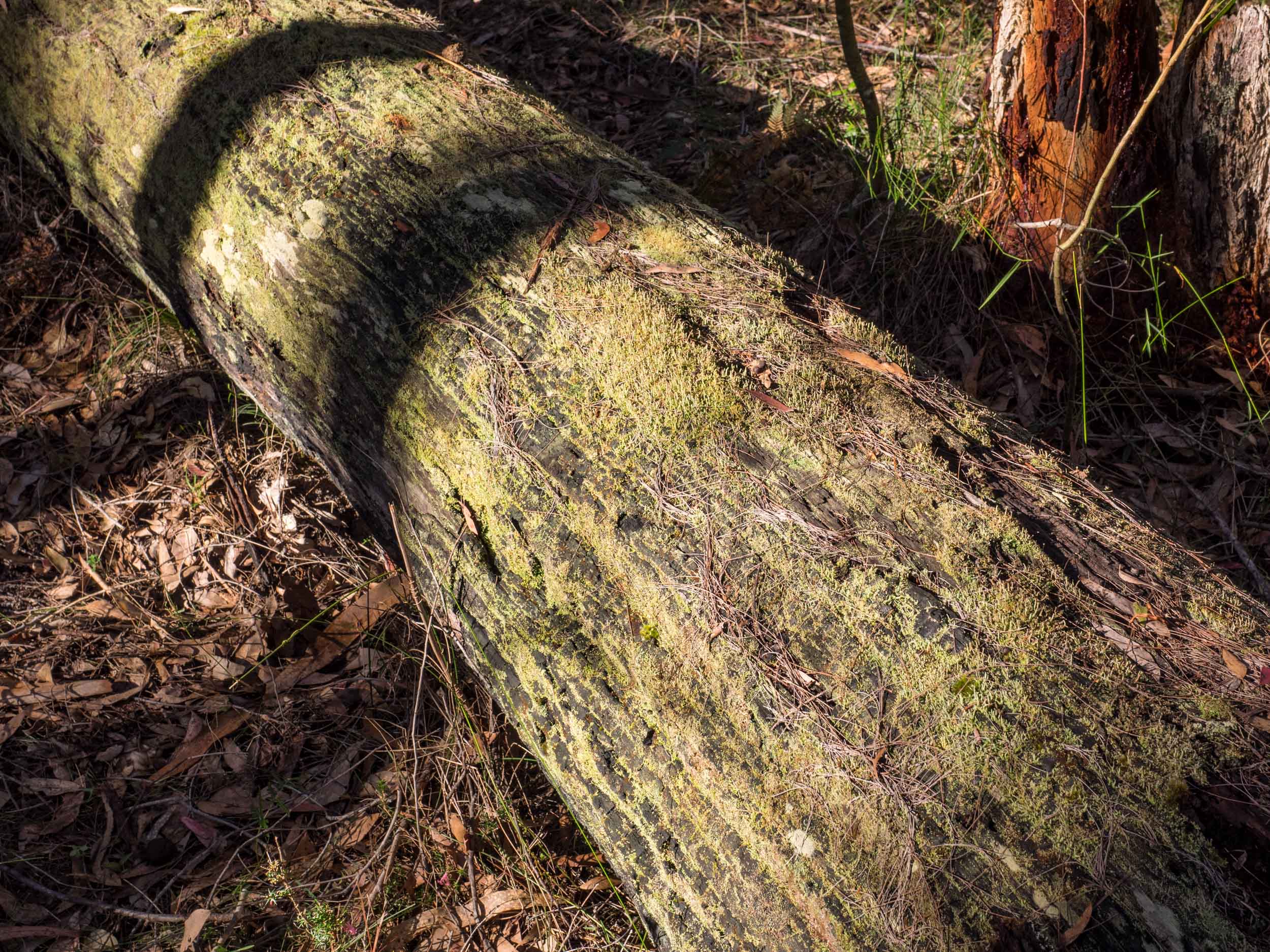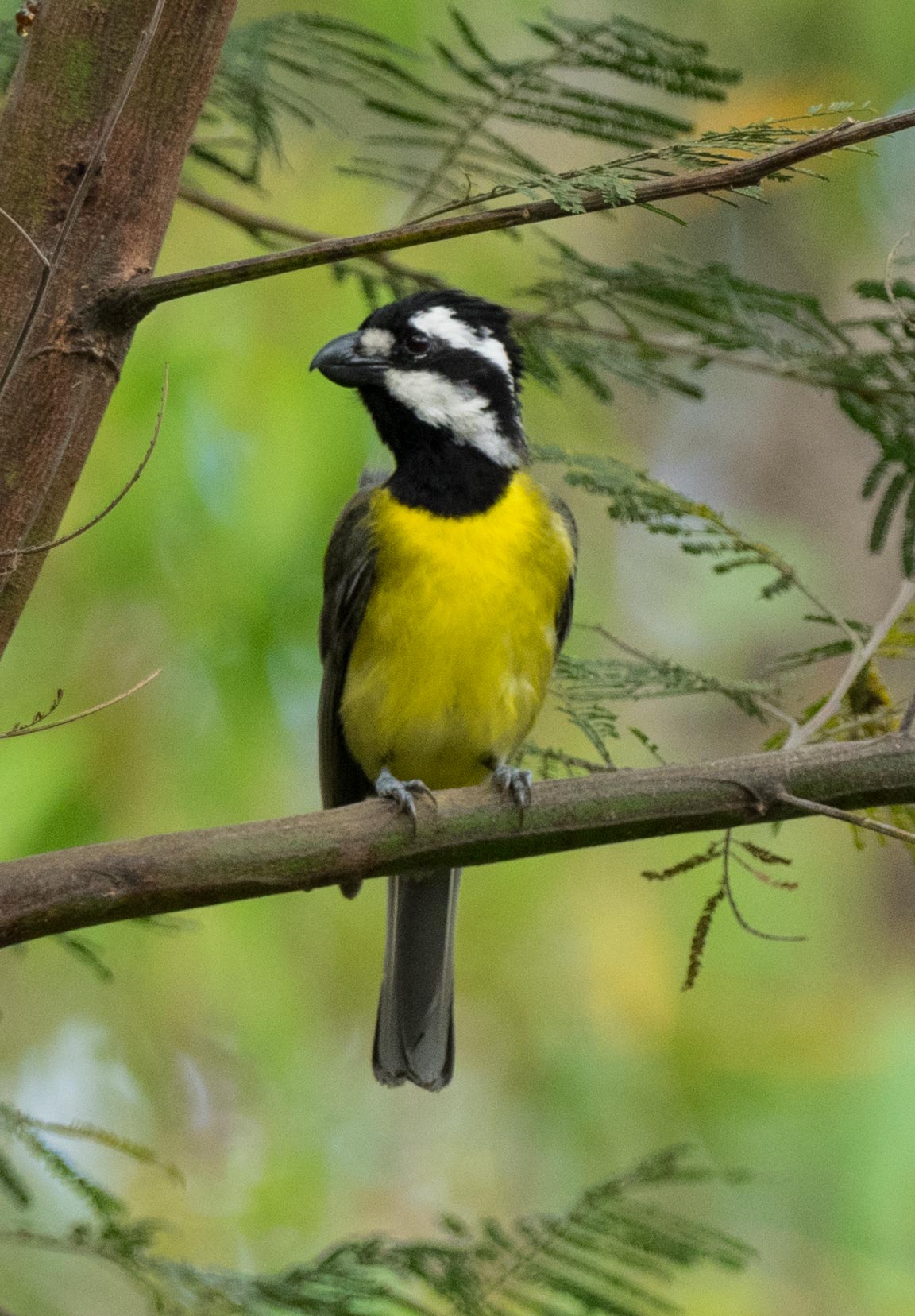Our tall trees

Tall eucalypt or gum trees are a defining feature of forests in south-eastern Australia. We are fortunate to have many such trees on our 5ha - probably over 750 - made up of a mix of the following species: Eucalyptus longifolia (Woolybutt), Eucalyptus globoidea (White Stringybark), Eucalyptus sieberi (Silvertop Ash), Eucalyptus cypellocarpa (Mountain Grey Gum or Monkey Gum), Eucalyptus consideniana (Yertchuk), Eucalyptus obliqua (Messmate) and Angophora floribunda (Rough-barked Apple).
A host of insects and spiders live in the foliage, branches and trunks of these trees. These arthropods are a key food source for several of our home birds, as is the eucalypt blossom. The branches and hollows in old eucalypt trees also provide nesting and roosting sites for many birds as well as marsupials such as the Yellow-bellied Glider and the Sugar Glider.
Angophora floribunda is one of the most common eucalypts on our block. The twisty branches are typical of this species. Some branches, like the one on the right, grow down towards the ground, rather than upwards or sideways. Red-browed Finches regularly nest in the foliage of this particular branch. The rough bark on the trunk runs all the way up to the finest branches. This eucalypt is one of the diagnostic species for our type of forest - Lowland Gully Shrub Forest.
Angophora floribunda
The rough-barked trunk of an Angophora floribunda tree. The brown vertical marks show where sap has been dripping from cuts in the bark made by Yellow-bellied Gliders. The sap is a favoured food of these marsupials.
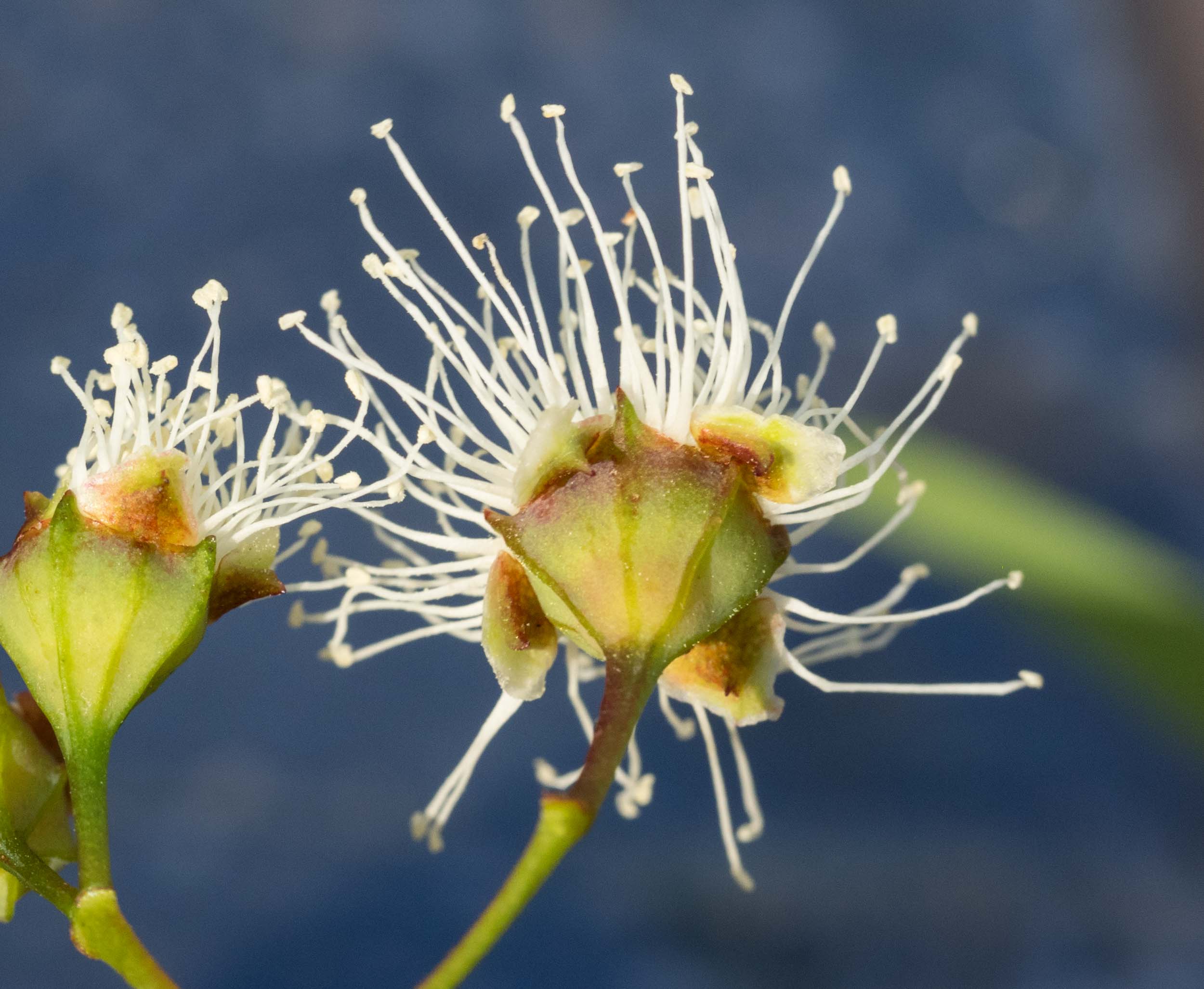
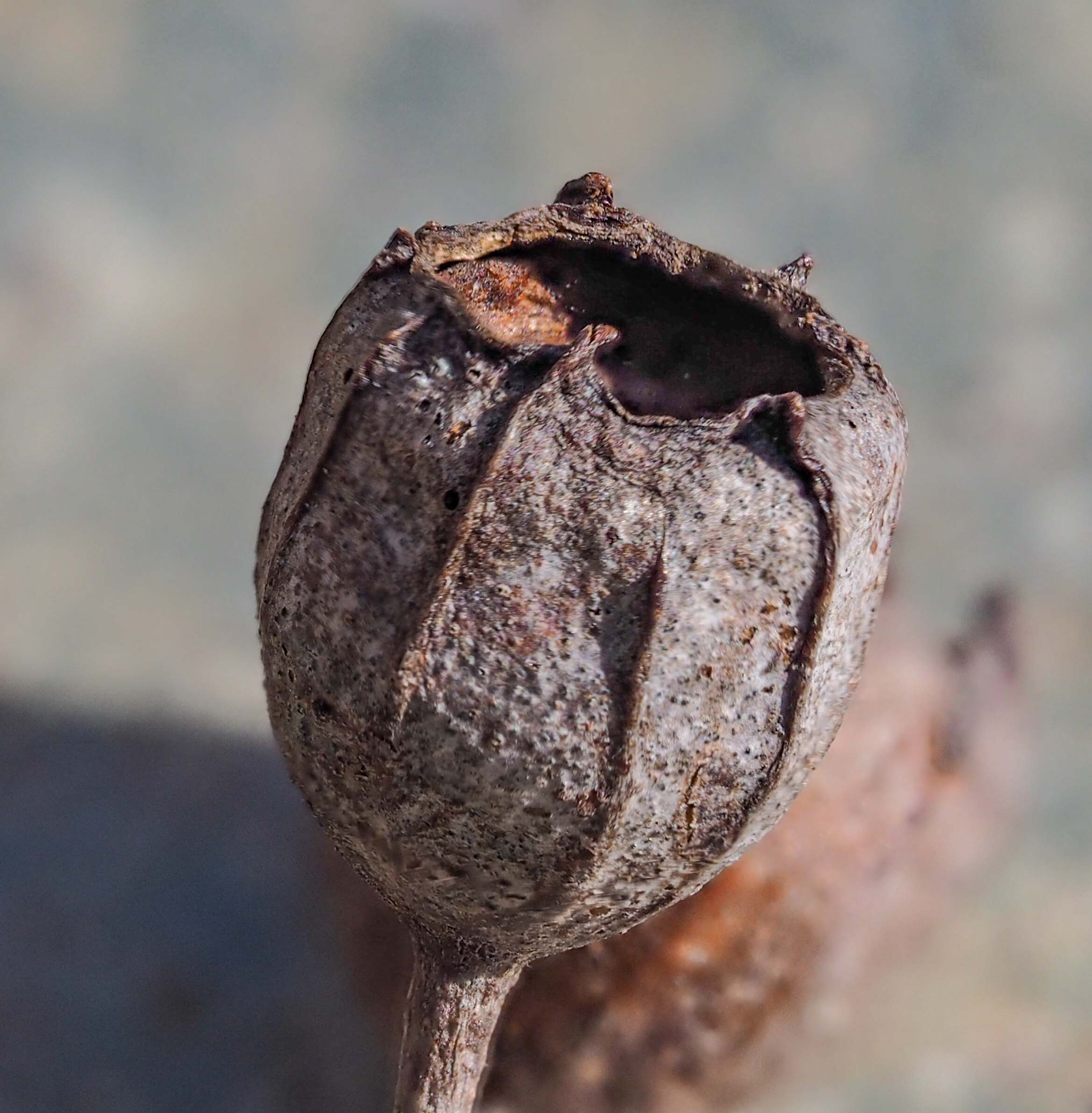
Angophora differs from the other eucalypt genera, Eucalyptus and Corymbia, in a number of ways: it has opposite rather than alternate adult leaves and it has free petals and sepals. In the other eucalypts, the petals fuse early in the development of the flower bud to form an inner cap, which covers the rest of the flower parts. The sepals either do not form at all or form an outer cap - depending on the Eucalyptus group. Angophora flowers, which retain free petals and sepals, lack both of these caps.
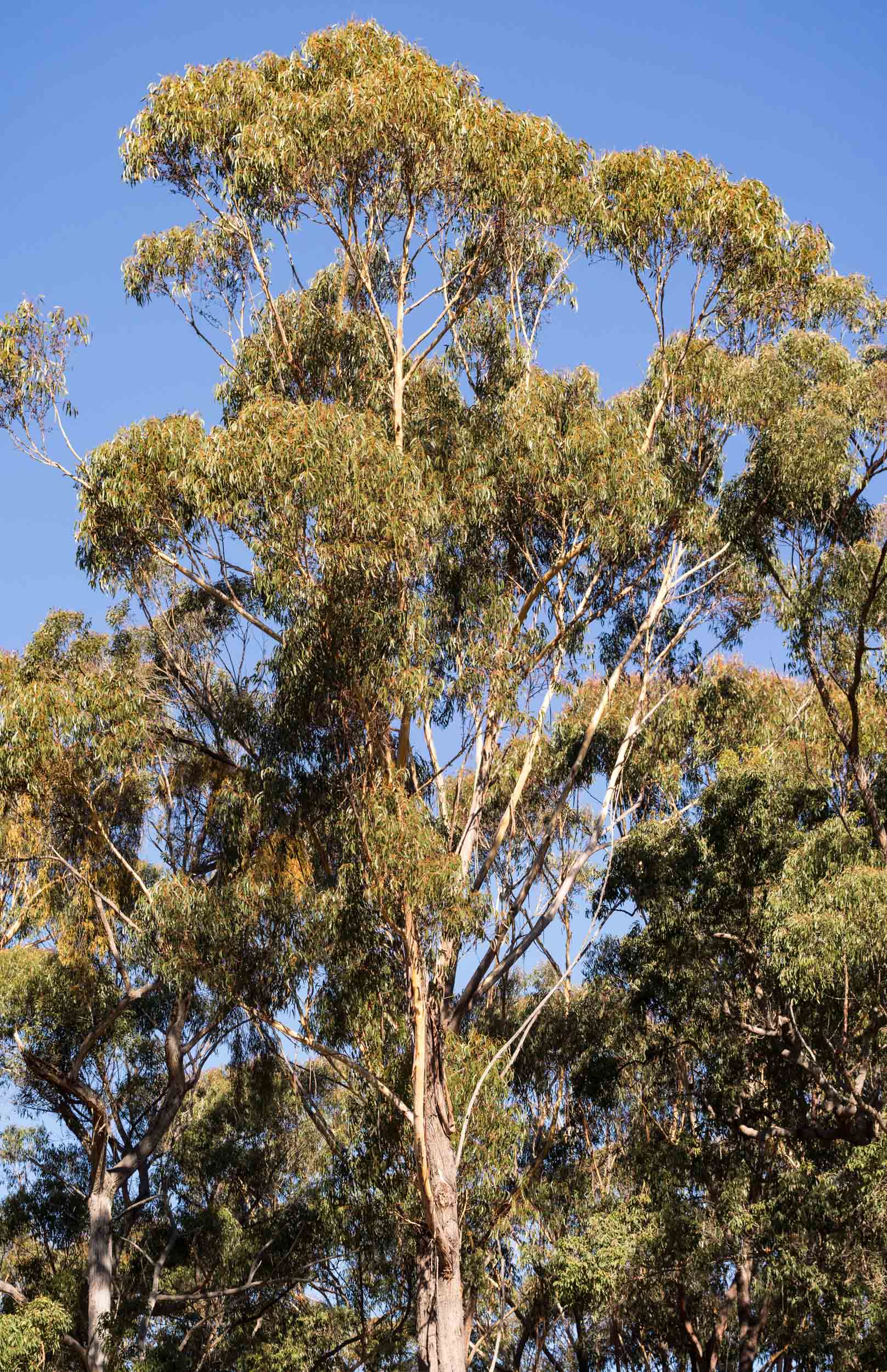
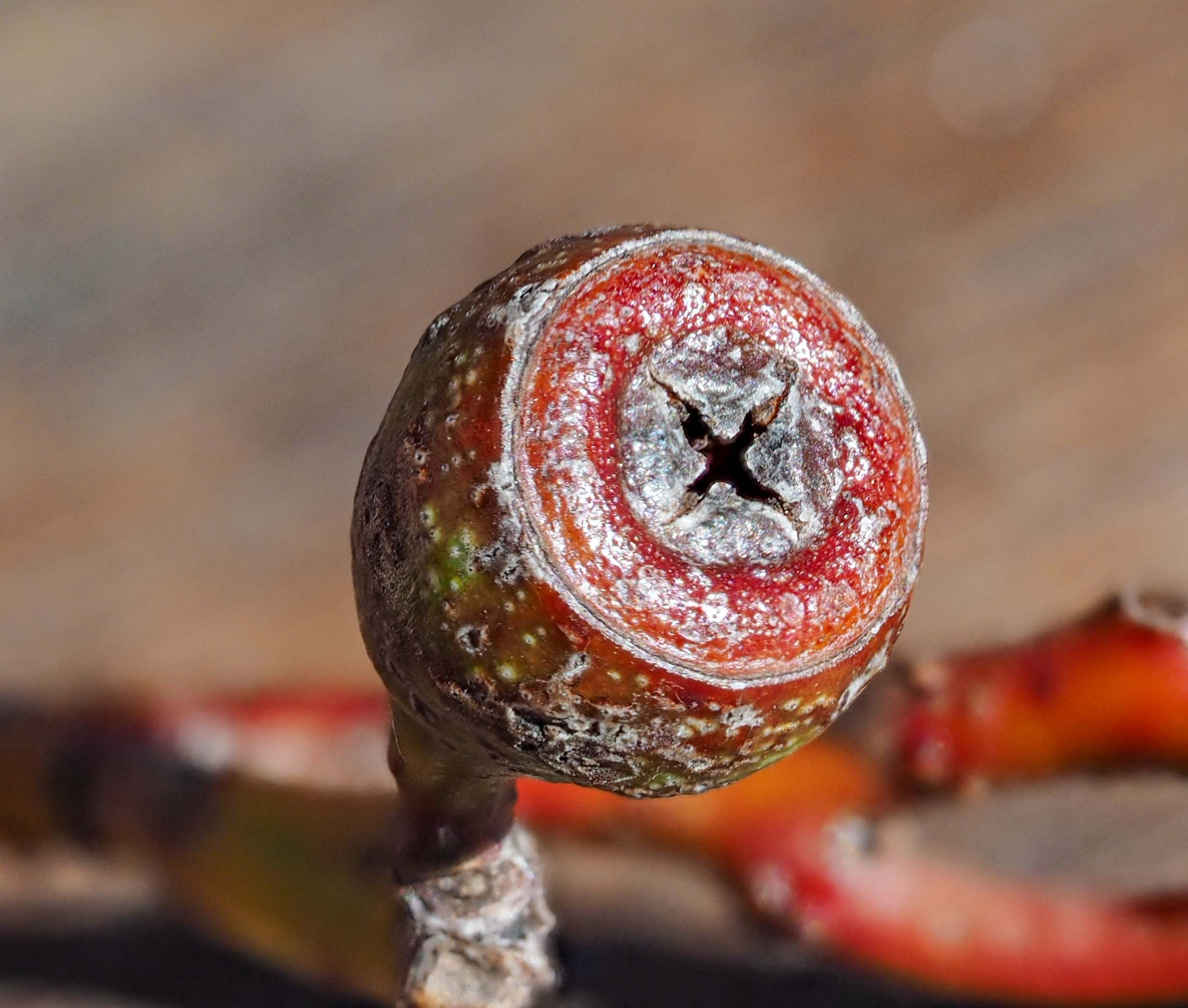
Eucalyptus sieberi is another common eucalypt species on our block. These trees typically have a straight trunk with few side branches before the crown. Most of the branches are long and straight and project upwards at a narrow angle to the trunk. Some of the largest E. sieberi trees on our block have a less regular shape with large branching limbs low down on the trunk.
The trunk and the base of the larger limbs is covered in a rough bark, which is shed higher up to reveal smooth, white branches.
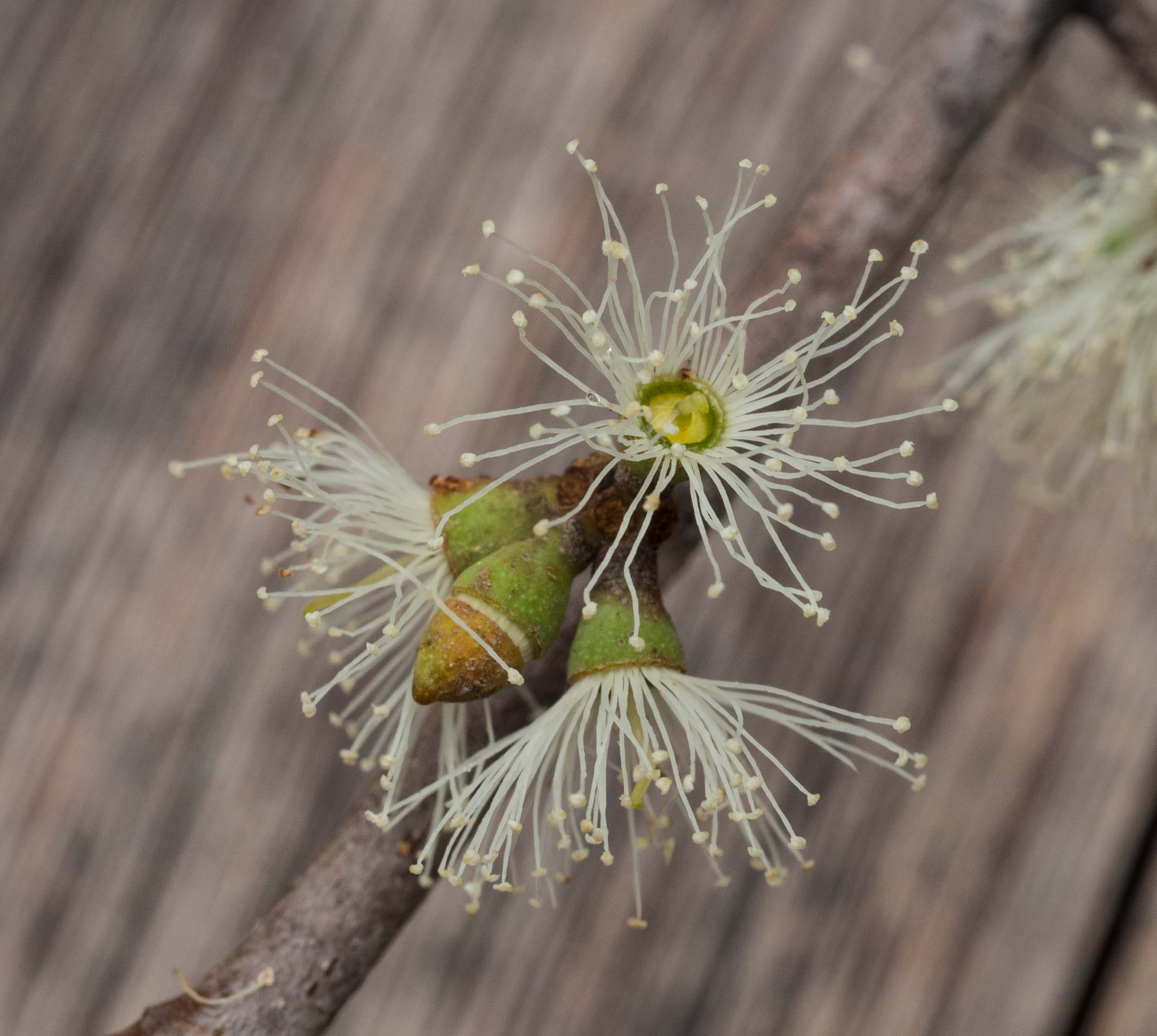
Eucalyptus globoidea is the third most common eucalypt on our block. The trunk is rough-barked, like E. sieberi, but unlike that species, the bark runs all the way up to the finest branches. The branching pattern is also typically less regular than in E. sieberi, with several twisting branches like Angophora.
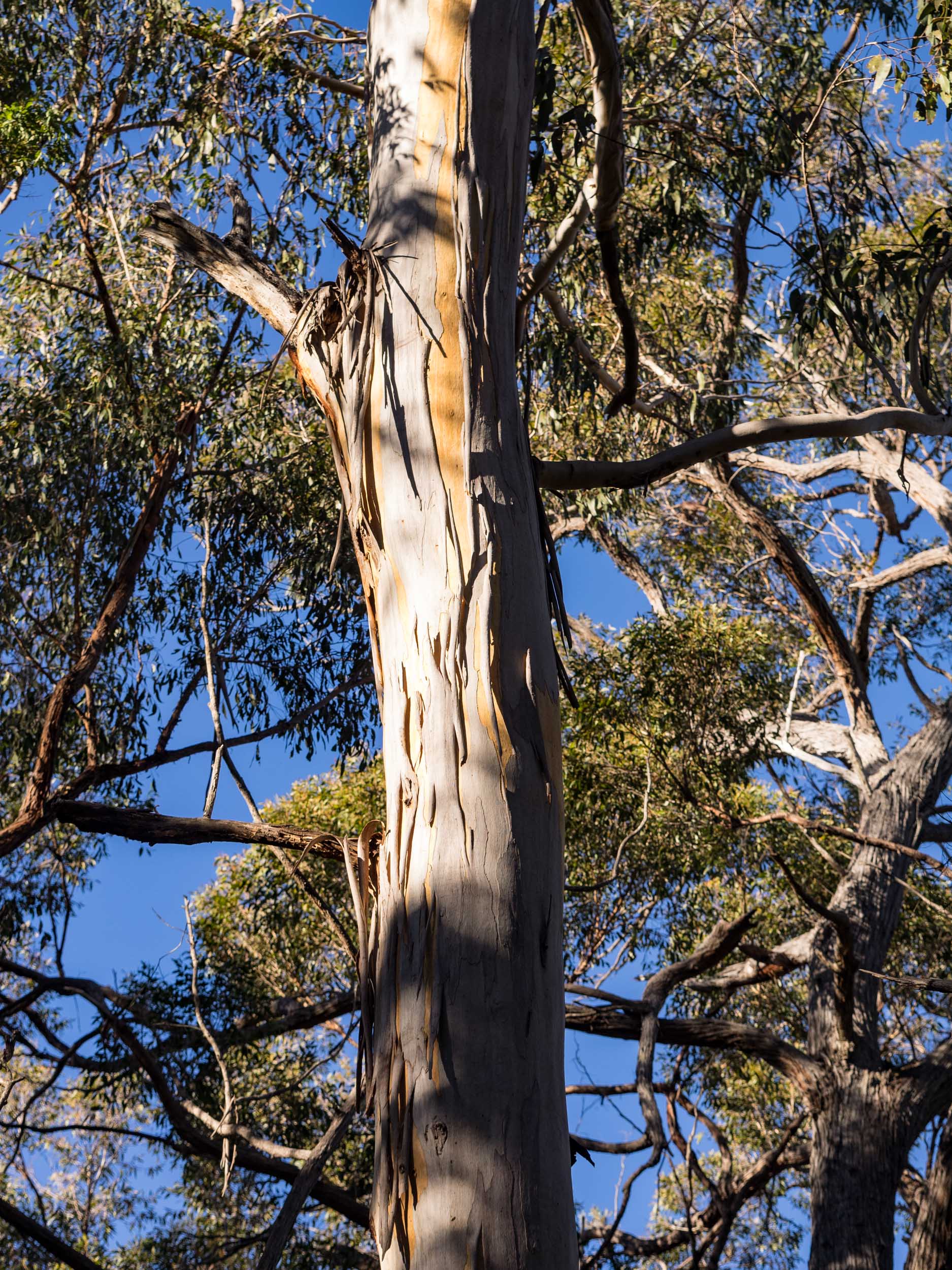
Eucalyptus cypellocarpa trees are some of the tallest on our block. Most of them have broken crowns, as they are exposed to strong winds. They are striking trees, with white or mottled trunks - the only true "gums" on our block. The bark on the trunk is shed in long ribbons, which are often left hanging on the trunk or on side branches. Birds such as the Crested Shrike-tit search for spiders and insects in these ribbons of bark.
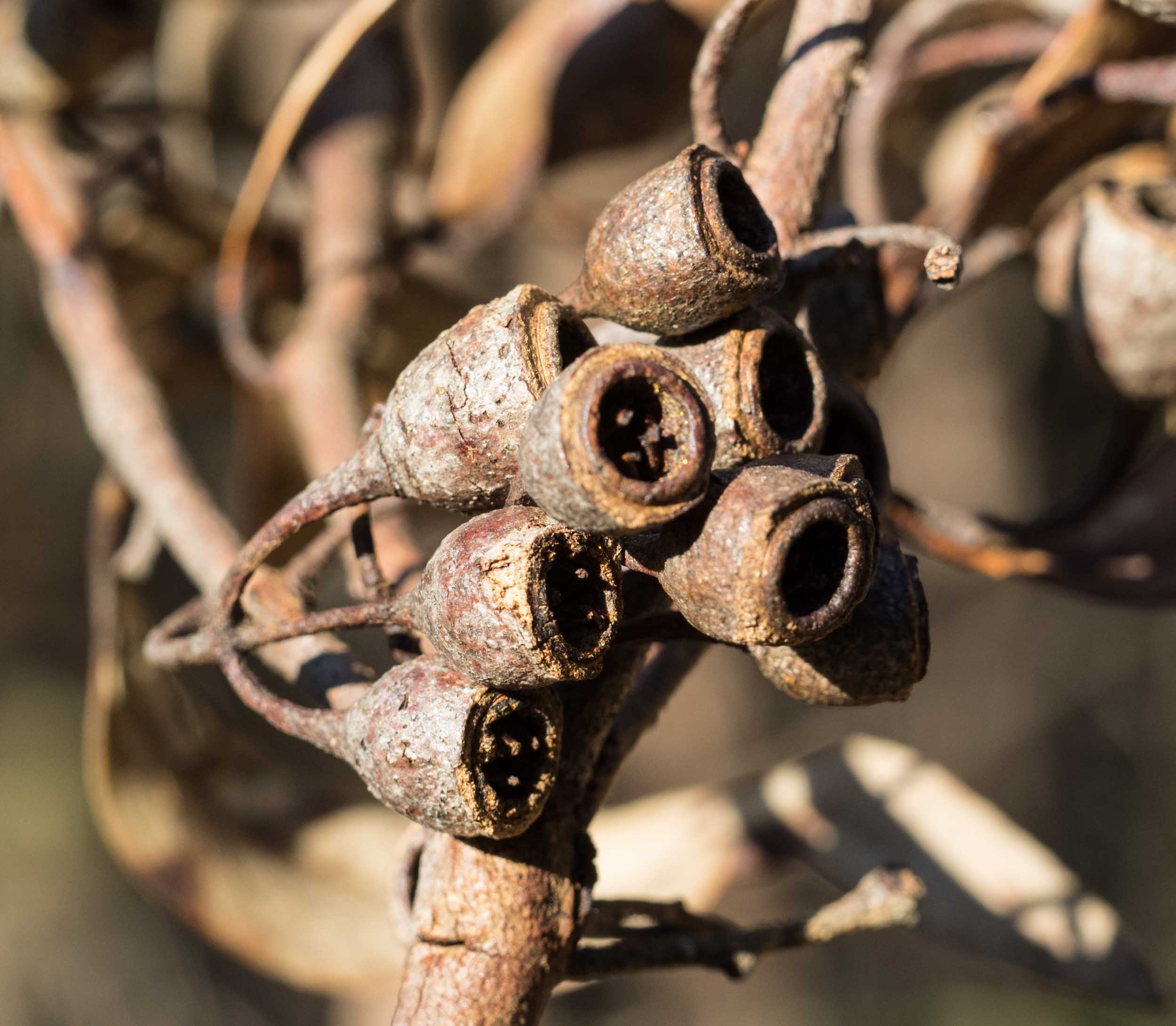
Eucalyptus longifolia is another of our rough-barked eucalypts. On our block, these are found almost exclusively on the steep slopes leading down to the Wonboyn river. We lie close to the southern limit of distribution of this endemic NSW south coast species.

